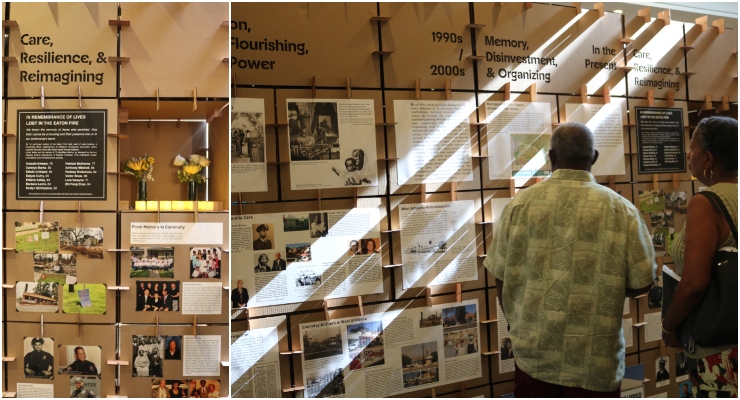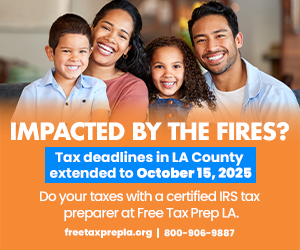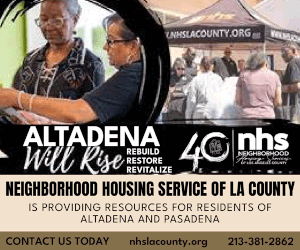Altadena Now is published daily and will host archives of Timothy Rutt's Altadena blog and his later Altadena Point sites.
Altadena Now encourages solicitation of events information, news items, announcements, photographs and videos.
Please email to: Editor@Altadena-Now.com
- James Macpherson, Editor
- Candice Merrill, Events
- Megan Hole, Lifestyles
- David Alvarado, Advertising


Sunday, October 12, 2025
Altadena Residents Map Cultural Memory in Community-Led Exhibition

[Image courtesy cityLAB-UCLA]
The exhibition, which runs through Oct. 31, began as a healing circle at the April 12 Altadena Senior Summit and evolved into a living archive as residents returned repeatedly to share stories and mark locations tied to family, community, and everyday life. According to cityLAB-UCLA project records, collaboration with local partners began in January 2025, shortly after the fire.
Originally designed for a one-day presentation at the Eaton Fire Rebuild Senior Summit on Aug. 2, the physical exhibition was completed within two weeks. Attendees at the August event urged organizers to keep the display alive and requested that it travel to other community spaces. Many brainstormed additional venues and expressed a desire to continue contributing to the archive.
Visitors use color-coded stickers to identify places of personal significance, including damaged homes, gathering spaces, and sites of future hope. Categories include places tied to personal family memories, places lost or damaged in fire, places of gathering, care, or healing, and places residents hope to rebuild or improve. Volunteer students facilitate the process and document oral histories.
Yang Yang, Co-Director of cityLAB-UCLA, said many participants want to restore not just physical spaces but also the spirit, programs, and culture that live beyond the built environment. The approach draws from a UCLA architecture seminar on spatial justice co-taught by Yang and Professor Dana Cuff, where students practiced “everyday archiving” using items such as event flyers, yearbooks, and Yelp comments about Black-owned businesses.
The team also worked with traditional archives, including the Altadena Historical Society, which provided property records, yearbooks, and civic group histories. Yang said archivists noted that many materials were donated and curated by local residents and managed by volunteers.
“Disaster recoveries. It’s never neutral. It reflects history and power lining, disinvestment and racial. The racist housing policies all created vulnerability that long before this fire and disasters only expose and sometimes deepen those divides,” Yang said. “We should always be cautious that recovery can become a tool for gentrification, land grabs, which already seen that happening and economic cleansing.”
She cited displaced small businesses but did not name specific examples. Yang said the project was inspired by 1960s Open Housing Covenants in Altadena, when neighbors publicly mapped their welcome to Black families during housing segregation.
Speakers at the August summit included Los Angeles County Supervisor Kathryn Barger, U.S. Rep. Judy Chu, Pasadena Mayor Victor Gordo, and Councilmember Tyron Hampton. According to remarks at the event, Barger said seniors were disproportionately impacted and “need hope,” while Gordo encouraged residents to ask for help, saying the city would provide it.
Yang said cultural memory functions as a recovery tool, explaining that Altadena holds generational ties and unique cultural meaning beyond its geographical location. She said place attachment strengthens participation in recovery efforts and fosters healing and stability. “We really wanted to create accessible and also welcoming ways for residents to remain engaged, remain connected during this period of disruption,” Yang said.
Two tracks are developing for the project’s future. One is a long-term vision led by Lena Kennedy to build a living community archive for the Black community in Pasadena and Altadena. The other involves smaller-scale design interventions such as memory boards, wayfinding cues, and simple gathering nodes, complemented by low-barrier programs including story circles and free meals. Yang said many of these activities are already run by local volunteer groups.
The exhibition’s temporary cardboard format may be replaced with a more permanent version to support future gatherings and inform reconstruction efforts. “It’s not just about the historical content but also its format, its ad hoc formats. Try to put spatial marks using cardboards to support community gathering and turn it into a place of solidarity and to make visible this everyday resilience,” Yang said.
The opening reception is scheduled for Oct. 12 from 3 to 5 p.m.
Altadena Calendar of Events
For Pasadena Events, click here











